West Bengal's Traditional Jewellery: A Cultural and Artistic Marvel
West Bengal, a state located in the eastern part of India, is known for its rich cultural heritage and exquisite traditional Jewellery. The state is home to many skilled artisans who have mastered the art of creating intricate and beautiful Jewellery pieces that reflect the unique cultural identity of the region. The traditional Jewellery of West Bengal is known for its intricate designs, vibrant colours, and use of a variety of materials such as gold, silver, and precious stones. These timeless pieces not only serve as beautiful adornments but also carry deep cultural and historical significance. In this article, we will explore the beauty and significance of the traditional Jewellery of West Bengal.
Shaka Pola
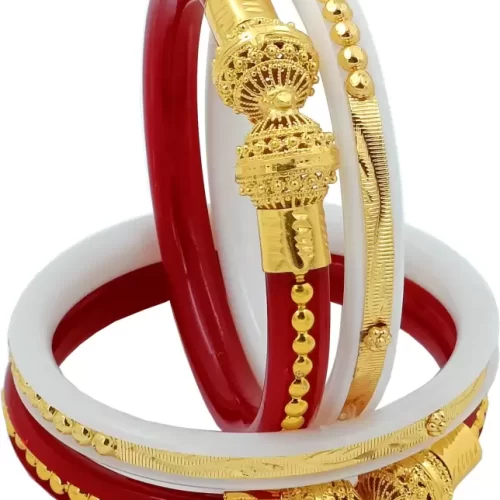
Shaka Pola is a type of traditional bangle worn by married Bengali women in West Bengal, India. It is made of red and white coral or sometimes made of conch shells. The bangles are typically paired and worn in odd numbers, such as three, five, or seven on each wrist.
The red and white colours of Shaka Pola are symbolic and hold significant cultural and religious importance. The red signifies the strength and power of the goddess Durga, while the white represents purity and peace. In Bengali culture, the bangles are considered auspicious and are believed to bring good fortune and protect the wearer from evil forces.
Shaka Pola is typically gifted to the bride by her mother-in-law on the day of her wedding, and it is a symbol of the bride’s new marital status. The bangles are also worn on special occasions such as religious festivals and family gatherings.
The making of Shaka Pola requires a great deal of skill and expertise. The coral or conch shells are carefully selected and polished to the desired shape and size. The bangles are then adorned with intricate designs and patterns, which are etched onto the surface by skilled artisans using small hand tools.
Despite the changing fashion trends, Shaka Pola remains an iconic piece of Bengali Jewellery that reflects the rich cultural heritage and traditions of West Bengal.
Pati Haar
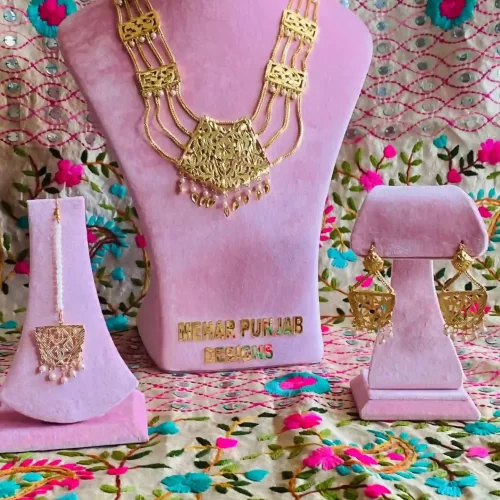
Pati Haar is a traditional necklace popularly worn by women in West Bengal during the Durga Puja festival, weddings, and other family events. This exquisite piece of jewellery comprises multiple strands of gold chains that are intricately woven together to form a beautiful and ornate pattern. The name “Pati Haar” is derived from the Bengali language, where “Pati” means “leaf” and “Haar” means “necklace”.
The design of this necklace is inspired by the leaves of the betel plant, which is considered to be auspicious in Bengali culture. Pati Haar is usually crafted in 22-carat gold and adorned with precious gemstones such as rubies, emeralds, and diamonds, adding to its glamour and elegance. It is not just a piece of Jewellery but a symbol of tradition, culture, and heritage that is deeply ingrained in the lives of Bengali women.
Jumkho
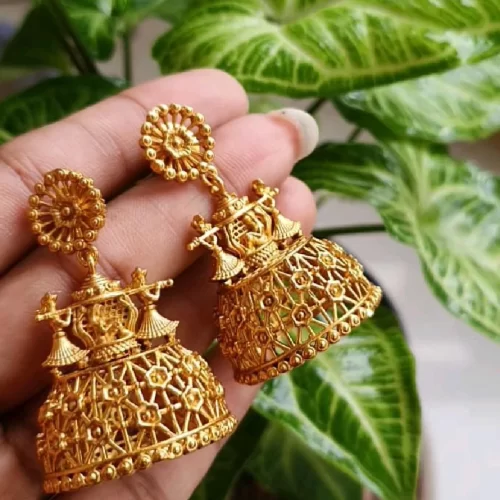
Jhumko is a type of traditional Indian Jewellery that is characterised by its distinctive bell-shaped design. These earrings are a popular choice among women in South Asia, especially in India, Pakistan, and Bangladesh. The word “jhumko” is derived from the Hindi language, where “jhumka” means “hanging earring”. These earrings are typically made of gold, silver, or other precious metals, and are often adorned with intricate designs and embellishments such as pearls, beads, and gemstones.
The jhumko style can vary from small and simple to large and elaborate, depending on the occasion and personal preferences. These earrings are a versatile accessory that can be worn with traditional ethnic wear or modern western outfits, making them a must-have for every woman’s Jewellery collection.
The jhumko Jewellery is not only an accessory but a part of cultural and traditional heritage, and it represents the elegance and beauty of South Asian women.
Tikili
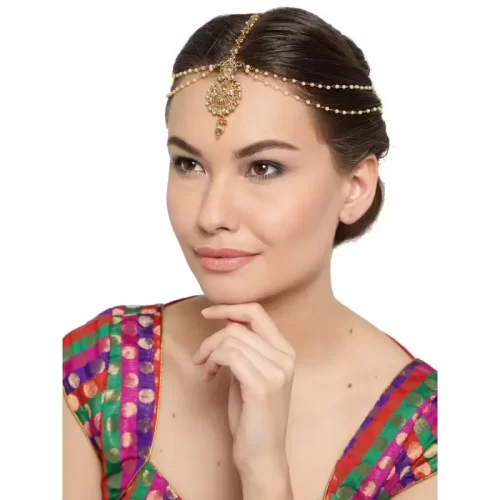
Tikli is a type of Indian Jewellery that is traditionally worn by women in the northern regions of India, particularly in Rajasthan, West Bengal and Gujarat. Tikli is essentially a pendant that is worn at the centre of the forehead, just above the eyebrows.
The pendant is usually made of gold, silver or other precious metals, and is adorned with intricate designs and embellishments such as pearls, diamonds, and gemstones. Tikli is considered to be a symbol of femininity, beauty, and grace, and is often worn by brides on their wedding day as a part of their bridal Jewellery set. It is also worn on other special occasions such as festivals, religious ceremonies, and cultural events. The Tikli is a unique piece of Jewellery that adds an extra element of charm and elegance to the wearer’s look. The Tikli is not just an accessory, but a cultural heritage that represents the rich history and traditions of India.
Gold Ratanchur
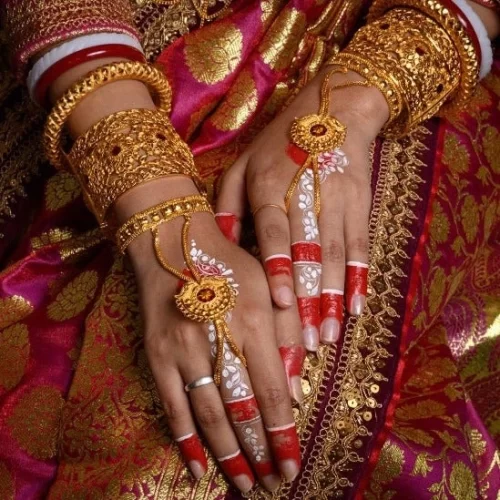
Gold Ratanchur is a traditional Indian Jewellery that has been worn by women for centuries. It is typically worn by brides on their wedding day in various regions of India, including Maharashtra, West Bengal and Karnataka.
The name “Ratanchur” is derived from the Marathi language, where “Ratan” means “gems” and “Chur” means “bangles”. The Jewellery comprises a necklace, earrings, and bangles, all of which are made of gold and adorned with precious stones such as diamonds, emeralds, and rubies. The design of the Gold Ratanchur is typically inspired by the motifs of nature such as leaves, flowers, and birds.
The elaborate and intricate designs of the Gold Ratanchur Jewellery set to symbolise the rich cultural heritage of India, and it is a testimony to the skills of Indian craftsmen who have been making such Jewellery for generations. Gold Ratanchur is not just a piece of Jewellery but a representation of the Indian wedding culture and is considered an essential part of a bride’s wedding attire.
Wrapping Up
West Bengal’s traditional Jewellery is a testament to the rich cultural heritage and traditions of the Bengali community. Pati Haar, Jhumko, and Tikli are just a few examples of exquisite and intricate Jewellery designs that have been passed down from generation to generation. These pieces of Jewellery are not only a symbol of status and wealth but also hold immense sentimental value for the Bengali people. The craftsmanship and attention to detail in the creation of these Jewellery pieces are a reflection of the artistic talents and skills of the Bengali artisans. Jewellery is an essential part of Bengali festivals, weddings, and other family events, and it continues to be a significant aspect of Bengali culture to this day. Overall, West Bengal’s traditional Jewellery is a beautiful representation of the Bengali community’s history, culture, and traditions.
